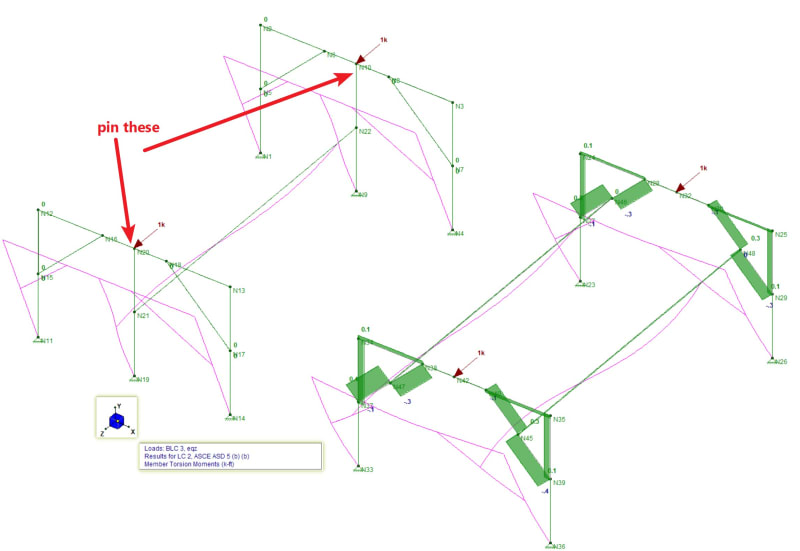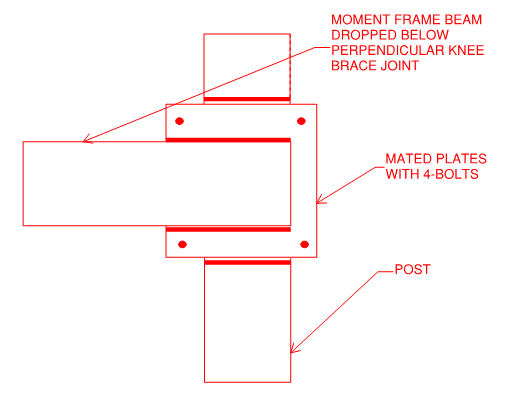I have a unique framing situation for a mechanical structure designed under Chapter 13 of the ASCE 7-16. The seismic loads are large (SDS = 1.2).
The attached RISA output shows one bay of a knee braced frame. This structure supports some equipment. Due to other space constraints not shown, the only reasonable area to include lateral bracing in the longitudinal direction is with a beam moment connected to a knee brace. This would load the knee brace in torsion. The planned connection would be an endplate connection with two bolts.
For reference, the columns are approximately 4' tall and are HSS3x3x_ or HSS4x4x_. The beams are HSS5x3x_.
QUESTION: Is this type of configuration allowed in SDC D under Chapter 13 of the ASCE 7-16? I know it isn't ideal or preferred but there are not many options.
Thanks in advance!
The attached RISA output shows one bay of a knee braced frame. This structure supports some equipment. Due to other space constraints not shown, the only reasonable area to include lateral bracing in the longitudinal direction is with a beam moment connected to a knee brace. This would load the knee brace in torsion. The planned connection would be an endplate connection with two bolts.
For reference, the columns are approximately 4' tall and are HSS3x3x_ or HSS4x4x_. The beams are HSS5x3x_.
QUESTION: Is this type of configuration allowed in SDC D under Chapter 13 of the ASCE 7-16? I know it isn't ideal or preferred but there are not many options.
Thanks in advance!




